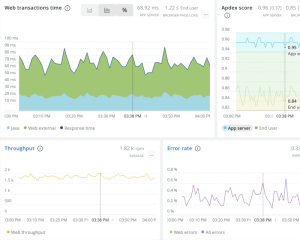
WASHINGTON, June 28, 2023 – The National Telecommunications and Information Administration on Wednesday released the final version of its model challenge process guidance for the $42.5 billion Broadband Equity Access and Deployment program.
As states prepare their five-year action and digital equity plans as mandated by the BEAD program, they are also working to outline a state challenge process that will allow entities to submit evidence to dispute a state’s claim on whether a location is unserved or underserved.
The NTIA documentation provides guidance on how to design and implement the state map challenge process that will be included in state Initial Proposals. The NTIA will review and approve this section first to allow states to begin conducting their challenge process prior to full initial proposal approval.

States are required to describe in detail how they will administer the challenge process, with the inclusion of four phases: publication of eligible locations, challenge, rebuttal, and final determination. “Eligible entities may determine their preferred approach,” read NTIA’s guidance.
Detailed guidance on permissible challengers and allowable challenges
Challenges will be accepted from permissible challengers, which is limited to units of local and tribal government, nonprofit organizations and broadband service providers, to the state through a state-maintained online portal. Those challenges that meet a minimum level of evidence, which is outlined by NTIA guidance, must be rebutted within the rebuttal period or they will be considered sustained.
The NTIA guidance provides a list of allowable challenges, which include identification of community anchor institutions, location eligibility determination, and enforceable commitments.
Additionally, states must detail an approach that “ensures that sufficient opportunity and time is given to all relevant parties to initiate, rebut, and substantiate challenges.” They must also ensure their challenge process is transparent and detail in their plans to, at a minimum, publicly post documentation explaining the challenge process, publicly post all submitted challenges and rebuttals, and host a public-facing website featuring all the documentation.

States are required to use the national broadband map as a starting point to identify all eligible locations within the state prior to conducting the challenge process. They may modify locations to reflect data not present in the national broadband map upon NTIA approval. They will not be allowed to add or remove broadband serviceable locations or change the definitions of unserved and underserved from those set in the national broadband map.
Changes for April version of the NTIA guidance
In April, the NTIA released a proposed BEAD Challenge Process Model which outlined similar guidance with a shorter challenge process window of 90 days. The new guidance provides more detail into the requirements under each step of the challenge process.
In particular, among the changes to the April guidance are that states “may rely on CAIs to identify their unmet broadband need. Where SBO capacity is limited, Eligible Entities should focus their efforts on enumerating those CAIs that are currently not served by gigabit broadband.” Additionally, the NTIA added this line: “If a provider claims gigabit service availability for a [community anchor institution] or a unit of local government disputes the CAI status of a location, the CAI may rebut” the challenge.
Additionally, the NTIA makes clear that individual broadband users may be able to “submit challenges through their unit of local government or a nonprofit, preferably via a web portal. This unit of local government or nonprofit will then upload the challenges to the state challenge portal, which in turn notifies the broadband provider of the challenge.”
Challenge processes must be complete within 120 days of commencement and allow challenges and rebuttals to be submitted for a minimum of 14 days.
Upon completion of the challenge process, states must submit to NTIA for review the proposed final classifications of each unserved, underserved, and community anchor institution location.
The agency hinted at the fact that it was developing a process for states to follow earlier this year.
Reactions to the NTIA guidance
ACA Connects commended the NTIA for requiring the use of the most recent version of the national broadband map which it believes is “the authoritative source for identifying unserved and underserved locations.”
It further expressed its support to the other guidance that “makes the process more robust and equitable” by extending the deadline for completing the challenge process.



